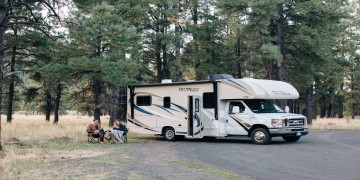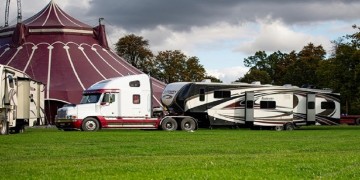Name of Blog
RV Tips Blog
Camping Tips Blog

Make Sure the Park Electricity is Safe
04-16-2018When plugging into an RV park’s power, you may not know the quality of the wiring or the qualifications of the person who actually wired the electric pedestal. In most parks, they hire electricians or have them on staff to fix electrical issues. Some small parks have cut corners and hired a camp host or a friend with Google skills to replace worn out electrical plugs or other electronics. With all the unknowns, how do you know an RV park’s electrical system is safe to plug your RV into?
Check the polarity.
The polarity of a plug is important. It isn’t necessary to understand the details of why and how. Simply put, if the plug is wired correctly, there is no problem. If the plug is wired with reverse polarity, then your system may not work or even become damaged. All it takes to create this problem is for someone to wire a plug incorrectly. Checking the polarity is always a good idea before you plug in.Related Read: Finding Power On the Go
Check for voltage surges or drops.
The voltage coming out of the campground should be around 120 volts. Even with appliances running, you should be getting between 105-130 volts from any given socket. If the voltage drops too low, this can cause appliances like your air conditioner to struggle and that could cause it to wear out much faster than it should. Inversely, if the voltage spikes too high, above 132 volts, it can damage things. It is a good idea to check that your voltage at any new RV park doesn’t drop or spike when power is used.How do you check these things?
There are a multitude of ways and devices to check the polarity and voltage of the park's power. One way to measure voltage drop is to attach a voltmeter to any socket in your RV and watch to see if the voltage drops significantly when a large appliance like the AC turns on. If the voltage drops below 105 while the AC is running and stays there, that is a problem and is most likely a default in the park’s power.The easiest way to check polarity and voltage is by using an all-in-one fault checker and surge protector made for RVs. You are probably familiar with surge protectors that are recommended for use with computers or other electronic devices. RV surge protectors work quite the same way. You simply plug one into your site’s electrical hook up and then plug your rig into it.
Surge protectors come in a range of prices. Camco makes one in the sixty dollar range. It has lights to indicate that the plug is wired properly and acts as a basic surge protector. You’ll find surge protectors for over two hundred dollars, as well. These will continually monitor the voltage and shut off power to the RV if any dangerous voltage is detected. Once voltage goes back to acceptable ranges, they will turn the power back on.
Related Read: RV Surge Guards…Yes or No?
The higher-priced RV surge protectors offer more security and features. When you figure the price of a burned out air conditioner and the stress of replacing it, a two or three hundred dollar investment in electrical protection is not really a high price to pay by comparison.
Comment

Author : Levi and Natalie Henley
Levi and Natalie Henley are a full time RVing couple. Together with their three cats and dog, they travel around the country in their 2011 Sunstar Itasca seeking work camping gigs. They share their adventures, seasonal job experiences, and travel tips on their website, www.henleyshappytrails.com/
Related Blogs

A Guide to RV Sewer Pipe Fittings
It is not a common subject of conversation over the campfire to discuss how to hook up your sewage line or how to empty your black tank. Indeed, it's a dirty job, but someone needs to do it. Indeed, changing RV sewer pipe fittings i...

Renovating an Old RV or Buying a New One - Things to Consider
If you enjoy the RV life but believe that your current RV is no longer up to the task, it's natural to wonder whether you should purchase a new one or repair it. Making such a choice is difficult. On the one hand, you have a vehi...

Does My RV Roof need a Bed Liner?
If you love RVing, then you must know the importance of a good and sturdy RV roof and why it needs proper maintenance. Without a properly maintained RV roof, then all sorts of things can happen. Think of the RV roof as you would the roo...




